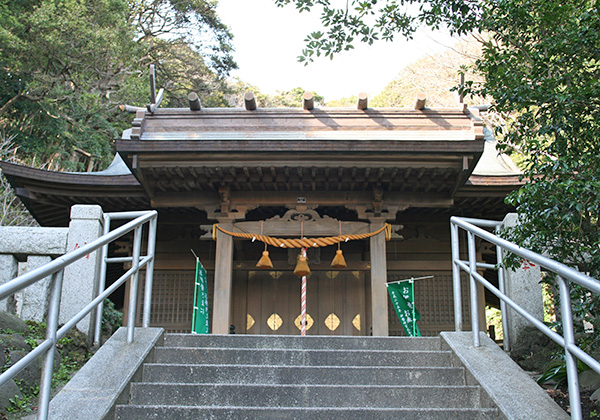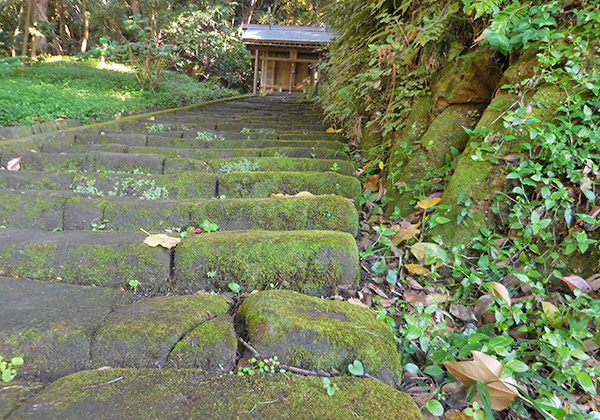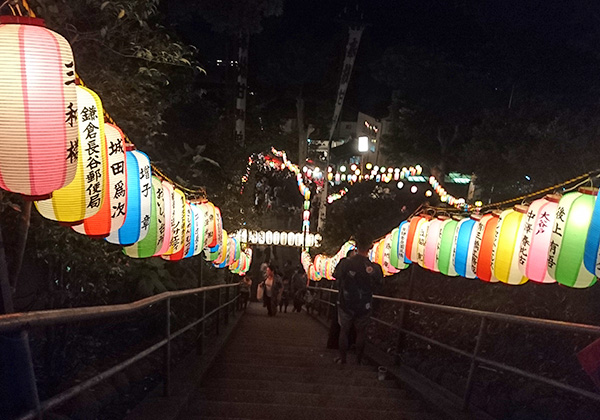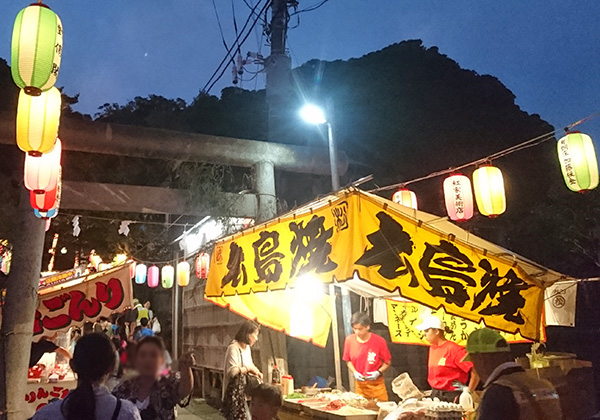Amanawa Shinmei Jinja
| Official Name | Amanawa Shinmei Jinja {Pronounced ah-mah-nah-wah shin-may gin-jah} |
|---|---|
| Religious sect | Shinto |
| Founded | in 710 by Priest Gyoki (668-749) and Tokitada Someya (birth and death years unknown) |
| Main object of worship | Sun Goddess Amaterasu {ah-mah-teh-rah-soo} |
| Address | 12-1, Hase 1-chome, Kamakura, Kanagawa 248-0016 (show route from current location ) |
| Location | 1,300 meters west-southwest of Kamakura Station |
| Time needed to get there | 20 minutes |
| Admission | Free (open yard) |
| Phone number | 0467-22-3347 |
| Restrooms | Not available |
Historical Overview
The oldest Shrine in Kamakura dating back to the early 8th century, its origin is not necessarily clear. According to the ancient documents titled History of Amanawa-ji Shinmei-gu (ji means a temple and gu is a shrine) kept by the Shrine, Priest Gyoki {gyo-key}, a famous priest in Nara Prefecture who helped build various temples across the country including the well-know Todaiji in Nara and Sugimoto-dera in Kamakura, was also the founder of the Shrine. Back then, there was a powerful and rich man named Tokitada Someya {toh-kee-tah-dah so-meh-yah} in Kamakura. With the help of Priest Gyoki, he built a temple called Entokuji near here, and simultaneously erected a shrine called Shinmei-gu at the top of the hill behind Entokuji.
When Yoriyoshi Minamoto {yoh-re-yoh-she me-nah-moh-toh} (985-1078), ancestor of Yoritomo Minamoto (1147-1199, the founder of the Kamakura Shogunate), was sent here as a lord of manor, he married a grand-daughter of Tokitada Someya and prayed to the Shrine god for birth of a baby boy. The couple's prayer was answered and Yoshiie {yoh-she-e-a} Minamoto (1039-1106), was born, who was great-great-grandfather of Yoritomo. From then on, the Shrine has gone tutelary for the Minamoto family. Yoritomo Minamoto, his wife Masako {mah-sah-koh} (1157-1225), their son Sanetomo {sah-neh-toh-moh} (1192-1219), and their suite repaired to the Shrine. Later, it was revered by many people, particularly by the locals, as their guardian deity, calling it "Shinmei-sama" (sama is an honorific, but much politer than san.)
The Shrine reminds those who are familiar with the Kamakura history of the bloody power struggle broke out in November 1285. Here once lived an influential samurai Morinaga Adachi {moh-re-nah-gah ah-dah-chee} (1135-1200) by name, an immediate vassal of Yoritomo Minamoto. When Yoritomo rose in arms against the Taira Clan in 1180 while he was still in exile in the Izu {e-zoo} Peninsula, Adachi was one of his loyal retainers and greatly contributed to their victory. Soon after Yoritomo settled in Kamakura where he established Shogunate office, Morinaga built his residence right here adjacent to the Shrine. It is recorded that Yoritomo and his family often stopped by Morinaga's at the time of their visit to the Shrine.
After Third Shogun Sanetomo was assassinated in 1219, the Hojo family took the reigns of Kamakura government and it lasted for more than a century until 1333. During the Hojo era, however, there were a series of power struggles waged between the Hojos and its rival families. Most of them were defeated by the Hojos resulting in bloodbath battles. The Adachis were the last one and Morinaga's descendants were doomed to be all but exterminated.
The Adachis had had close matrimonial relations with the Hojos and both were once solidly united. For example, the wife of Tokimune Hojo {toh-kee-moo-neh hoh- joe} (1251-1284), the Eighth Hojo Regent, was a member of Adachi family and gave birth to Sadatoki Hojo {sah-dah-toh-kee hoh-joe} (1271-1311), the Ninth Hojo Regent. (She helped erect Tokeiji). Given their kith and kin, it was quite natural for the Adachis to side with the Hojo should there be any struggles between the Hojos and other families. The situation suddenly changed in 1285, however, as Yasumori Adachi {yah-soo-moh-re ah-dah-chee} (1231-1285), great-grandson of Morinaga, had to confront the Hojos over the issue of government policy. Sadatoki became the Ninth Regent in 1284 at age 14, but was under the guardianship of Yoritsuna Taira {yoh-re-tsu-nah tie-rah} (?-1293), a high-ranking officials, as his wife had been Sadatoki's wet nurse. Yasumori Adachi was also powerful in the government since he was grandfather-in-law of Sadatoki. Yasumori often clashed with Yoritsuna over the decision-making process in the government. Exhausting patience, Yoritsuna plotted a conspiracy and made a false charge against Yasumori that he was trying to topple the Hojo regime. Upset by the charge, Sadatoki ordered his military forces to make a sneak attack against the Adachis and their members. A civil-war type battle was waged at and near the Adachi residence in November 1285. In this bloodbath, the death toll reached over 500 and the Adachis were almost eradicated. Historians call the battle Shimotsuki {she-moh-tsu-kee} (November) Incident as it occurred in November.
Today, this area is surrounded with private houses and there is nothing reminiscent of Adachi residence, except a stone monument telling "This is the site where the abode of Adachi stood".
Also near the Shrine stands the old residence of Yasunari Kawabata {yah-soo-nah-re kah-wah-bah-tah} (1899-1972), a Nobel Literature Prize (1968) laureate. He moved here in 1946 from Nikaido (in Kamakura) and lived until he killed himself in 1972, during which he wrote The Sound of the Mountains, one of his novels staged in Kamakura. Unfortunately, the Kawabata residence is not open to the public.
The Shrine consists of two structure: the oratory in front and the sanctum in back. The old structures collapsed due to the Great Kanto Earthquake of 1923. It was rebuilt in 1936, but the roofs became leaky after a lapse of more than half a century. In an effort to preserve the Shrine, parishioners and volunteer groups helped finance necessary funds to repair the roofs. It was completed as recently as August 1998 and now we can view the fine copper-roofed Shrine standing quietly in the woods.
Sacred to the Sun Goddess Amaterasu is same as that of the Grand Shrine of Ise in Mie {me-a} Prefecture, which has long been honored by the imperial family and served as a mecca of Shinto. Amanawa Jinja is a miniature version of the Ise Grand Shrine. Take a closer look at the roofs. Both the oratory and the sanctum have horn-like cross-boards called Chigi {chee-ghee} extending above the roofs at both ends. Also five poles are placed on top of the roof horizontally, that is called Katsuogi {kah-tsu-o-ghee}. This is a typical Jinja architecture called Shinmei method.
Being less famous in Kamakura, the Shrine is usually deserted. I believe, however, it is worth to visit. It may be somehow difficult to locate the Shrine, but turn right at the three-story Fire Station building which stands at the right-hand (north) side of the main road connecting Kamakura Station to the Great Buddha Statue. A red fire engine will be on the ground floor if there is no fire in the neighborhood. Incidentally, when you need to call for an ambulance in Japan, dial 119 at the Fire Department, not 911.
Annual Festival takes place from September 14 through 17. Portable shrines called Mikoshi {me-koh-she} are carried by parishioners.





